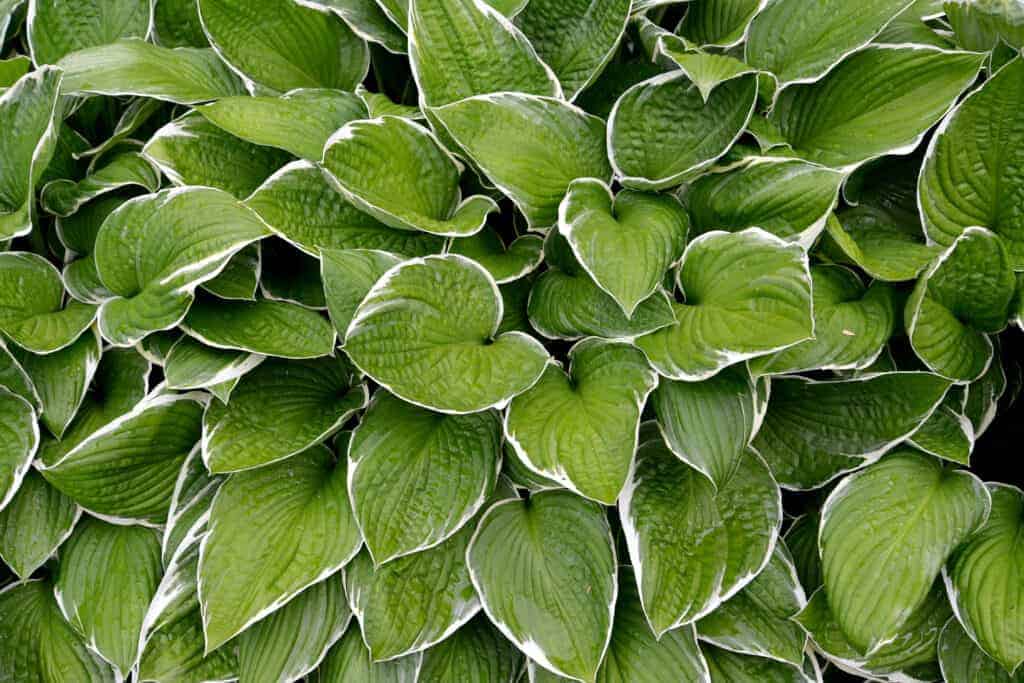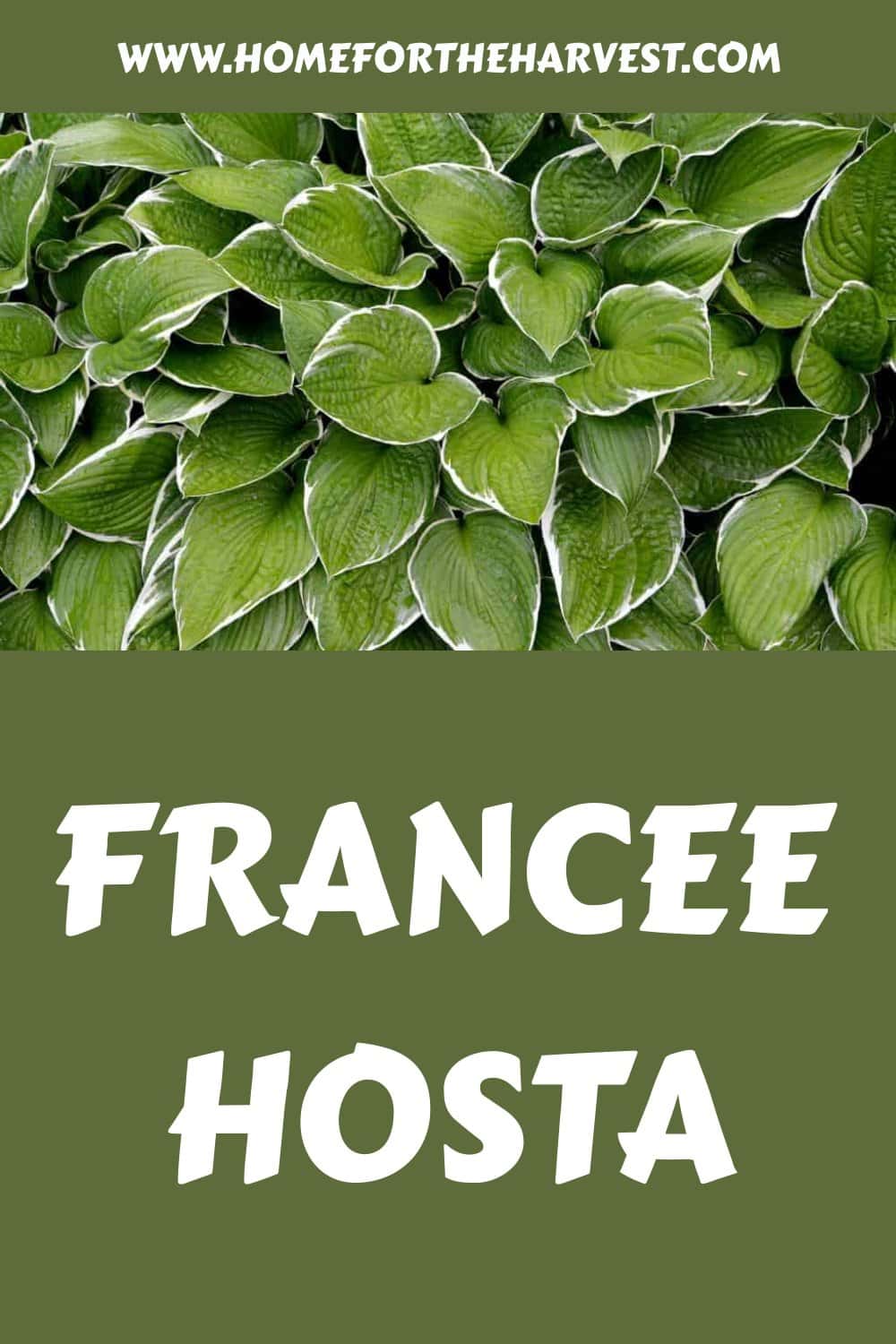The Francee hosta is a medium-sized variegated hosta cultivar known for its dependable green leaves with thin white edging. Grown for its quick growth, low-maintenance upkeep, and tolerance of shady locations, this plant takes about five years to fully mature into that dense, picturesque hosta everyone loves.
Francee hosta basics
Francee hosta is popular among gardeners for both its beautiful foliage and tolerance to different lighting conditions. With its large heart-shaped, dark green leaves outlined in ivory, it is a medium-sized hosta plant. Francee grows very quickly and is also well-suited to growing in large containers.
An individual clump tends to grow about 3′-4′ wide and just under 2 feet tall. The pale lavender flower flowers bloom atop stalks that typically reach just over 2 feet tall. Francee blooms later than many other hostas, flowering in mid-late summer.
Francee is also one of the later hostas to emerge from the ground in the spring. The fresh shoots have a near-purple hue as they appear, making this an interesting specimen in the early spring garden.
The Francee hosta was developed by Minnie Klopping of Nebraska in the 1970s and introduced through the American Hosta Society in 1986. The Francee Hosta originated as a naturally occurring sport mutation of Hosta albomarginata.
Since its introduction, Francee has become one of the most popular varieties of hosta ever introduced. This variety has also been used in the development of other popular hosta varieties. The Francee hosta was awarded the prestigious RHS Award of Garden Merit in 1993.
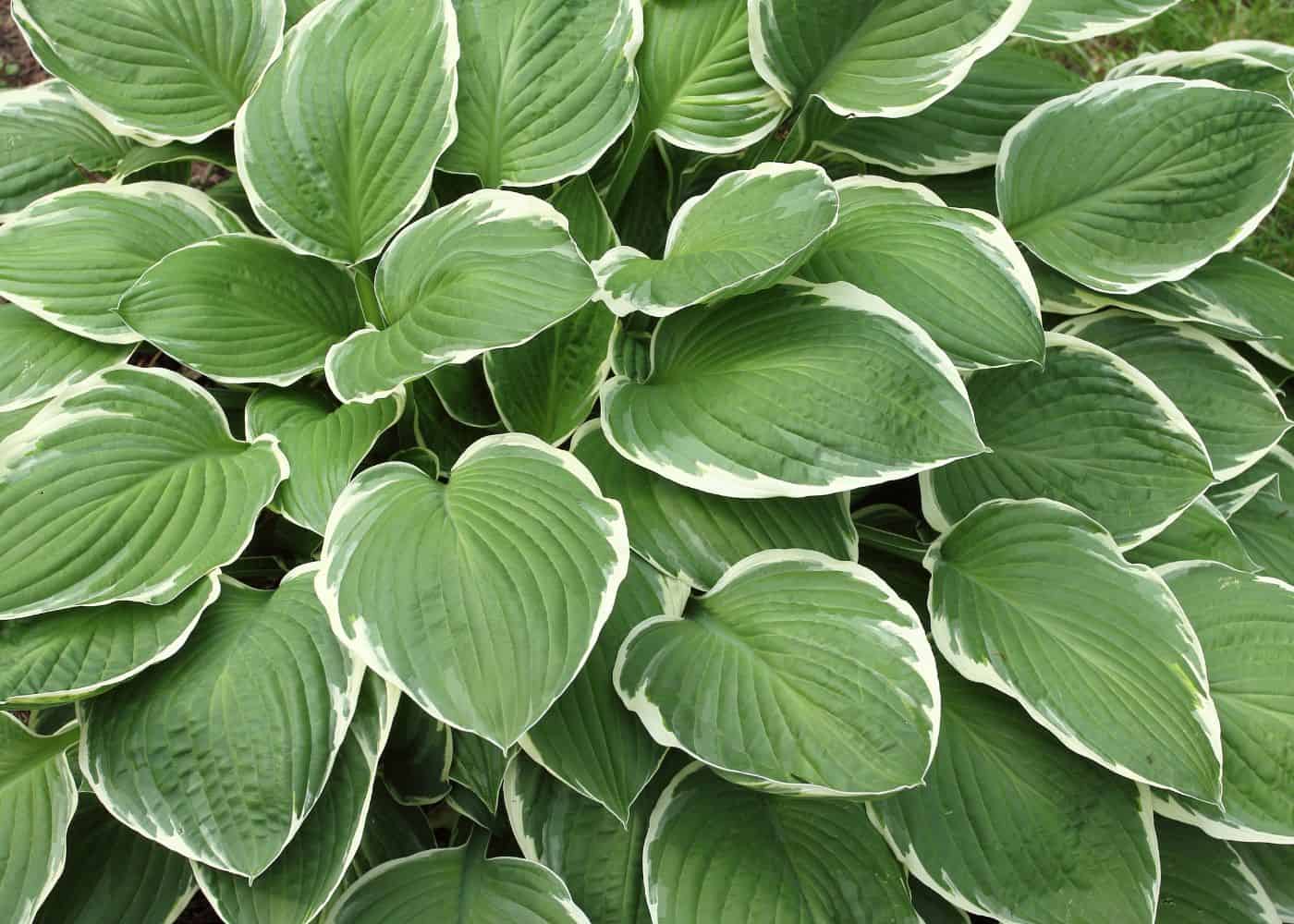
Choosing a planting location
Francee hostas are quite tolerant of the sun and tend to do best in a location where they receive morning sun and afternoon shade. They only need all-day shade in the hottest climates (typically zones 8-9). These plants like rich, slightly acidic soil, often enriched with organic compost.
They’ll also need to be in a place that’s easy to water. Dry soil can lead to the white margins on their leaves turning brown. These hostas can tolerate short heat waves (even in the temperature range around 100°F (38°C), provided they have adequate water and shade.
“In an experiment conducted by the author, H. ‘Francee’ was grown for several years in a pot standing up to its crown in a pot in sunlight all day long without so much as a scorched margin. In normal soils, the same hosta has to be grown in dappled shade to prevent leaf burn.”
The New Encyclopedia of Hostas, by Diana Grenfell and Michael Shadrack
How to plant a Francee hosta
Hostas can be planted using dormant bare roots or with potted hostas from the garden center. Hostas are best planted in the spring. Bare-root hostas are slightly more difficult to plant than potted ones but still very manageable, even for beginners.
- Prepare the soil: Ensure the soil is well-draining and rich in organic matter. Amend poor soil with compost or other organic material. This is especially important in heavy clay soil or overly sandy soil.
- Dig the hole: Make the hole twice as wide as the root ball of your ‘Francee’ hosta. The hole should be only just as deep as the root ball.
- Take the hosta out of its pot: Gently remove the hosta and loosen the thick white roots carefully. Pull them away from the root ball and let them stretch out.
- Plant the hosta: Place the hosta in the hole, ensuring the top of the root ball is level with the soil surface.
- Backfill the hole: Fill in around the hosta with soil, patting down gently to remove air pockets.
- Water well: After planting, water the hosta thoroughly to settle the soil and hydrate the roots.
- Apply mulch: Mulch around the plant with organic mulch to retain moisture, regulate soil temperature, and suppress weeds.
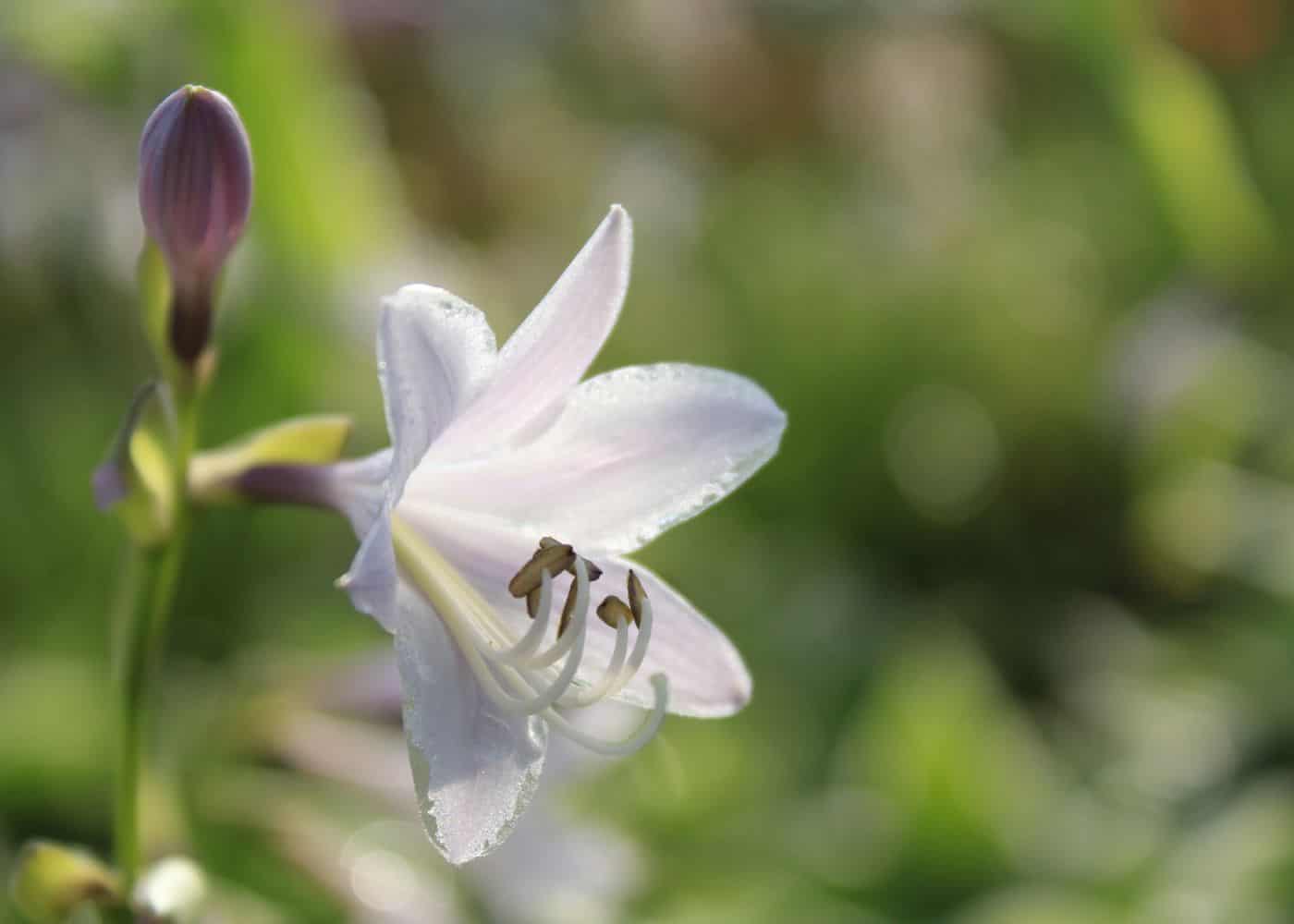
Caring for Francee hosta plants
Caring for Francee hosta plants generally involves making sure the plants have enough water, particularly when planted in hot climates, during heat waves, and when planted in naturally dry spots. Keep the soil consistently moist, especially during dry periods, for the first year or two after planting.
A good rule of thumb for watering hostas is to give them about 1” (25mm) of water each week. If the hostas receive this much rain that week, they likely don’t need to be watered, but any shortfall should be made up with supplemental watering.
Try not to water the leaves. Instead, apply the water directly to the soil overtop of the roots (drip irrigation works very well for hostas). Hostas are best watered early in the morning, as evening watering can encourage overnight slug and snail damage.
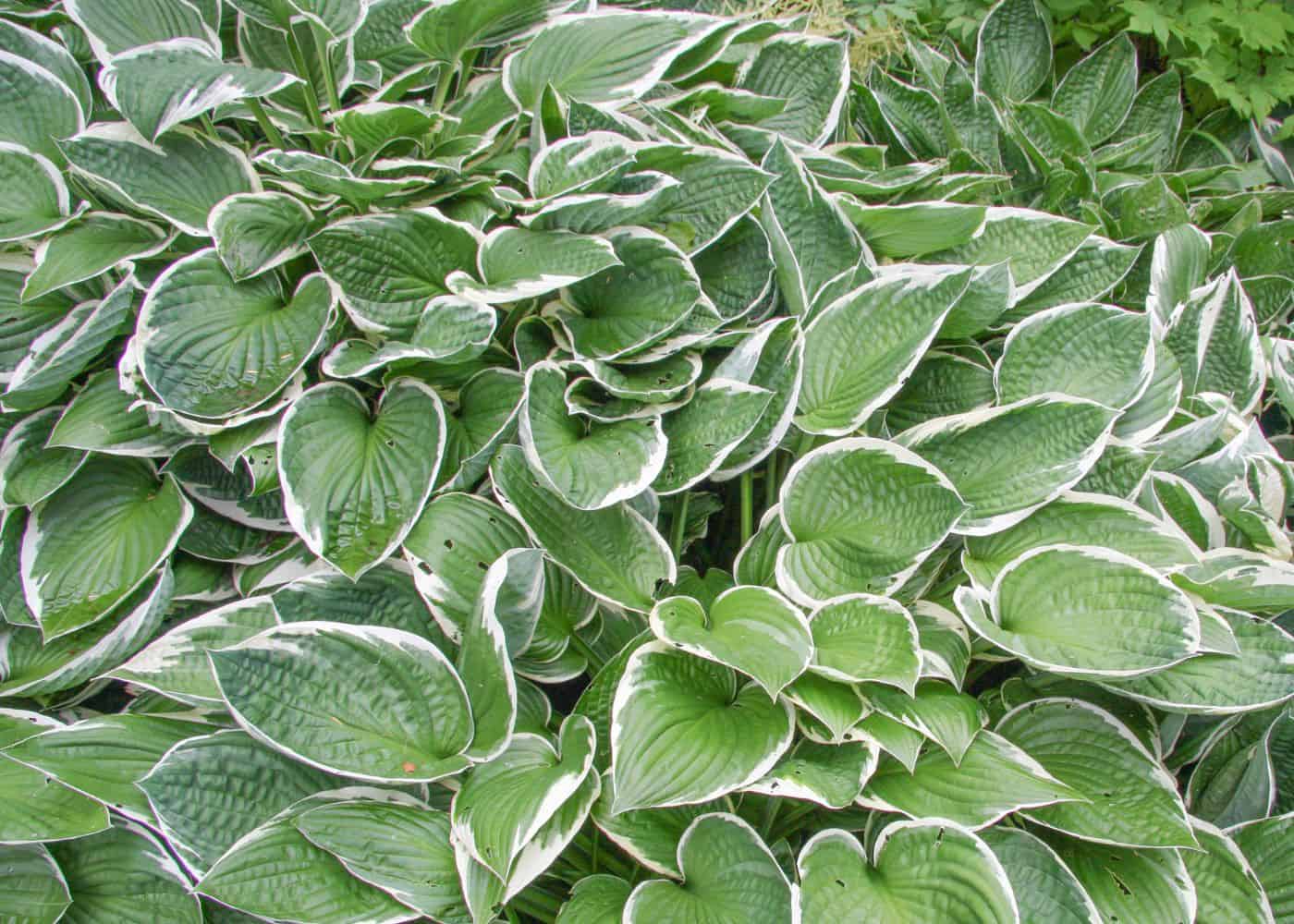
Pests and disease
Common hosta pests include slugs, snails, deer, and a few common plant diseases.
Slugs and snails
Though these guys are common in any garden, slugs will go after your Francee hosta with a vengeance. And the best way of getting rid of them is pest control with beer or sugar water traps. Fill a tuna can about halfway with some beer and bury it in the ground a bit (leaving it uncovered) near where the slug population is most prevalent. They’ll slip right into the tin with no way of getting out.
Deer
Deer are known to have a particular fondness for lush green hostas, making these plants a frequent target in gardens that deer can access. The tender, lush leaves of hostas offer a nutritious and palatable meal for deer, especially in early spring when other food sources might be scarce. This attraction can pose a significant challenge for gardeners, as deer can quickly decimate a hosta bed, leaving behind only stubs of what were once vibrant, leafy plants.
To protect hostas from deer, gardeners often resort to deterrents such as deer-resistant plantings around hostas, physical barriers like fences, or the use of deer repellents. However, the effectiveness of these methods can vary, and in areas with high deer populations, keeping hostas completely safe from browsing can be a formidable task (usually involving fences and dogs).
Disease
Hostas, while hardy, are susceptible to several diseases, particularly fungal infections. One common fungal disease is Hosta Anthracnose, which is caused by the fungus Colletotrichum hostae. This disease manifests as large, irregular, brown, or black spots on the leaves, often with a yellow halo. The spots may coalesce, leading to significant leaf damage and detracting from the plant’s aesthetic appeal. Another fungal issue is root rot, typically caused by waterlogged soil conditions common in heavy clay soil. It leads to the decay of the root system, resulting in wilting, yellowing, or the collapse of the plant.
Viral infections can also sometimes plague hostas, with Hosta Virus X (HVX) being the most notorious. HVX causes a variety of symptoms, including foliage mottling, distortion, and stunted growth of leaves. Unlike fungal diseases, there is no cure for HVX and infected plants should be removed and destroyed to prevent their spread. Good cultural practices, like proper spacing for air circulation and avoiding overhead watering, can help minimize these diseases. Additionally, buying hostas from reputable sources and inspecting new plants for signs of disease are crucial steps in maintaining healthy hosta collections.
Similar hosta varieties
Here are some other similar hostas to the popular Francee hosta:
- Patriot hosta (descended from Francee)
- Fire and Ice hosta (descended from Francee)
- Liberty hosta
- Frosted Jade hosta
- Sarah Kennedy hosta
- Ginko Craig hosta
- Platinum Tiara hosta
- Gloriosa hosta
- Lakeside Cha Cha hosta
- Great River Sonata hosta


